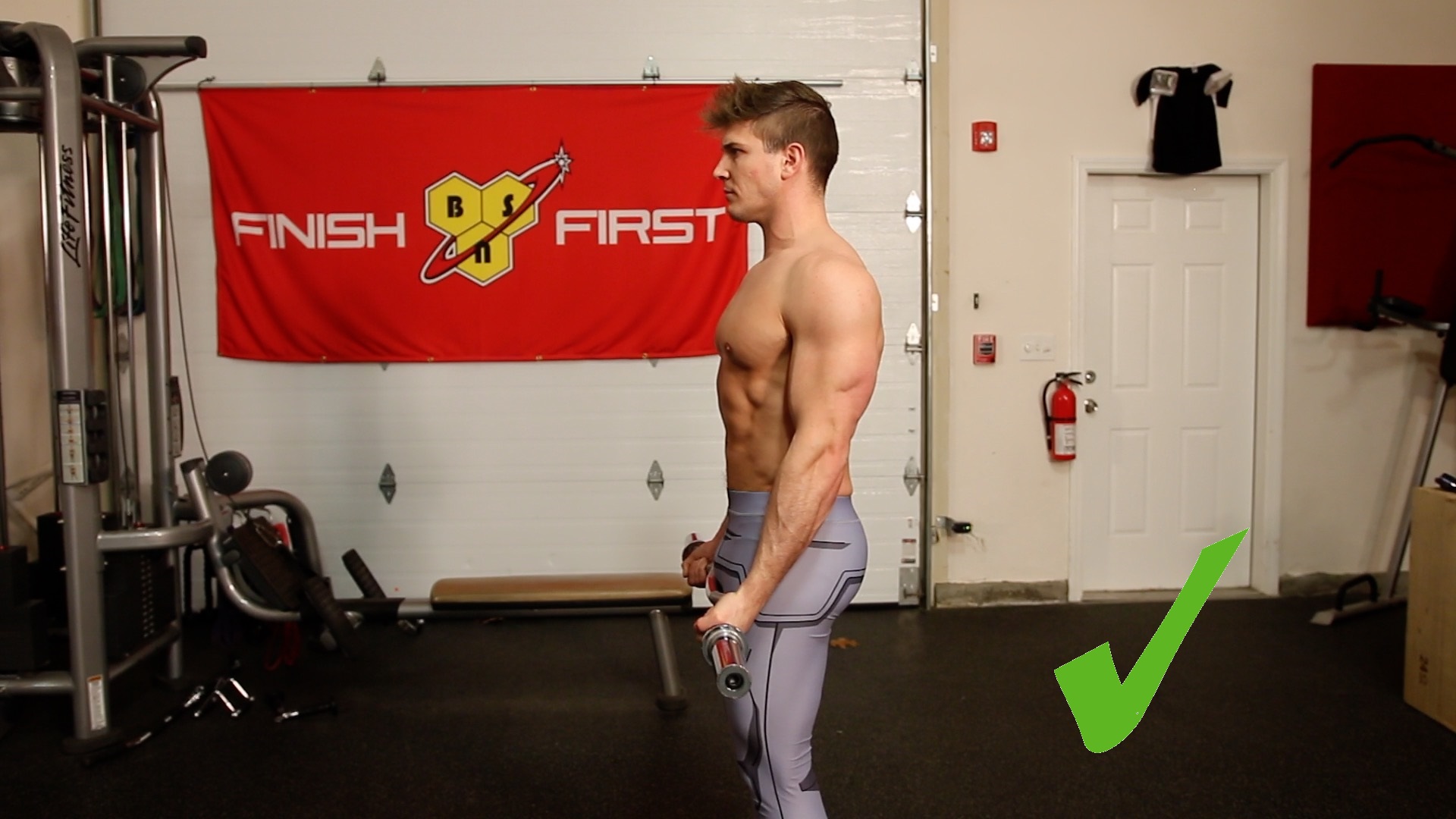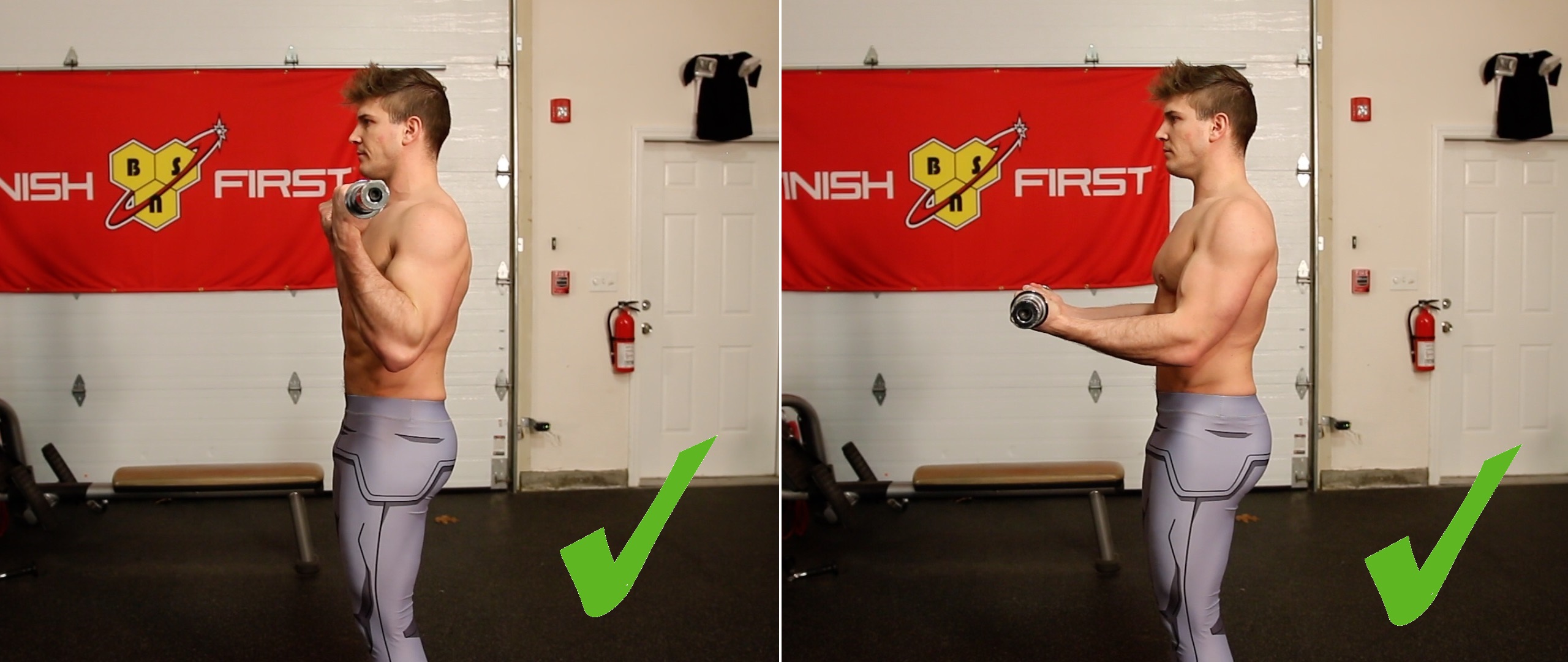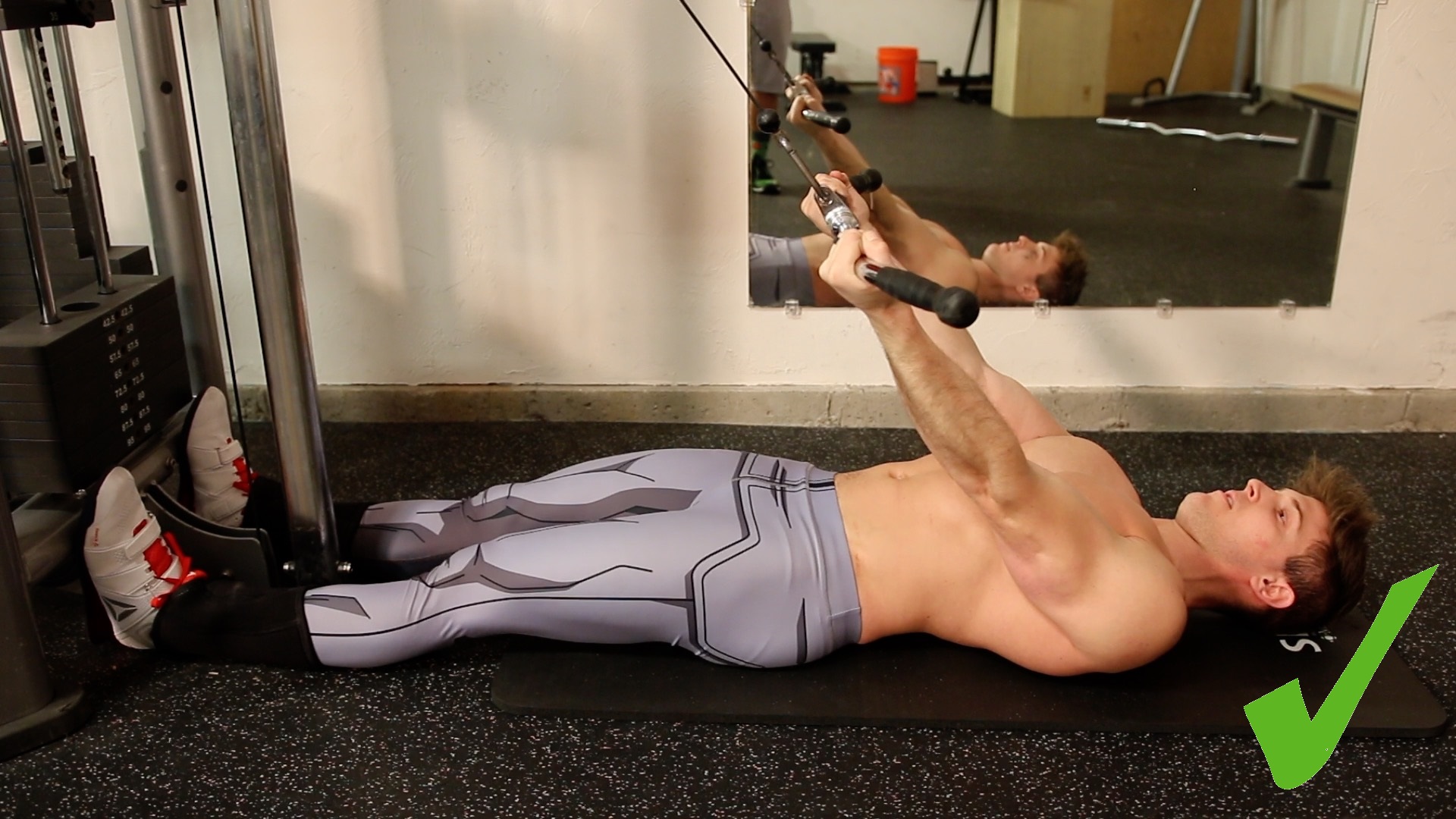Stop Doing Barbell Curls Now!
Do This Instead!
Today is the day you’re going to stop doing barbell bicep curls…at least for a little while. The goal of this article is to help you understand that if you’re not seeing gains in your biceps, and you’re doing loads of weight for your bicep curls or various bicep exercises, it’s usually because of two things.
The first is because you’re having a hard time activating the area properly, and the second is that your form is breaking down. Or, it could be a mix of both of these issues. So I’m going to show you a technique that you can utilize for the next 2-3 weeks to help you gain better control of the entire range of motion of any barbell curl that you’re doing, so you can better maximize the efficiency of it, so you can start to see some gains. First, let’s talk about what you are probably doing wrong with your regular barbell bicep curl.
The Problem With Barbell Bicep Curls
To perform a barbell curl with proper form, your elbows are going to stay either in line with your hips or slightly in front. You’re going to curl the weight all the way to the top of the movement, and then as you lower it down, you’re going to lower it AWAY from your body so that your elbows can stay either in line with, or slightly in front of, your hips. It’s the motion of lowering the bar AWAY from your body that keeps tension on the biceps, and makes the movement much harder to do, especially when it gets to heavier weight.


The problem is that most people can bring the bar up pretty easily, but as they start to lift heavier, form breaks down (whether you’re realizing it or not). You then start to see the elbows shoot back behind the hips on the eccentric portion of the movement and the weight just drops with no control. Or, the other thing you start to see with really heavy weight is the bar comes down halfway, then the elbows shift back, the barbell touches just below the belly button, and then the curl becomes a half range of motion movement, which DOES NOT keep tension on the biceps. It just makes you look like an idiot in the gym, and I don’t want to see that happen to you! So I am going to show you how to fix that problem.

Maximize All 3 Functions Of The Biceps
The first thing you’re going to do is get rid of your barbell. Again, this isn’t a permanent replacement for the barbell curl, it’s just going to be a replacement for now until you learn how to fully engage your biceps throughout the entire range of motion. You’re instead going to use the cable machine for your biceps. The reason why you’re going to use a cable machine is because this is actually going to allow you to work through all 3 functions of the biceps.
When you’re doing a standing barbell curl, you’re only really able to take advantage of 2 functions – one of them being supination, and the other one being the actual flexion where you get to the top of the movement. The third function of the biceps is actually shoulder flexion, which is when you get to the top position of the movement, and then raise your arm up further. When you’re doing really heavy weights with a barbell curl, you can’t exactly curl it to the top position, and then bring your arms out so you can do shoulder flexion to bring the bar to your forehead. It doesn’t make any sense, and you’re just going to end up probably tearing something.
Floor Cable Bicep Curl
So instead, you’ll go over to the cable machine, and set it up so that the top of the pulley is at about your chin level. You’ll then grab the bar (make sure it is a straight bar and not an E-Z curl bar, so that you can maximize supination) and lay down on the ground flat on your back. You’re going to notice a few things right off the bat. Number one, without even doing anything other than grabbing the bar and laying down, your elbows will be in front of your hips. They’re going to stay like that the entire time, because it would be really difficult for you to bring your elbows to the floor – it doesn’t make sense, and it doesn’t feel right. You’re already in a good starting position, and you’re already feeling tension in your biceps because your hands are supinated and you’re holding weight in the air.


From this position, you’re going to curl the weight to your forehead. By curling the weight to your forehead, you will notice your elbows make a subtle movement where you get shoulder flexion. You’re already getting flexion of the forearm, and now because you’re using a cable, you’re actually able to bring the weight down and then get that little bit of extra flexion from your shoulder, to allow you to really flex and squeeze your biceps as hard as you can on every single repetition. Because the cable is much higher in the air, it will force you on every single repetition to fully extend your arms at the bottom of the movement, and not cheat yourself on what a heavy negative has to offer.
Conclusion
For the next 2-3 weeks, instead of doing a barbell curl, I want you to do this cable version for 5 sets of 8 reps when you train your biceps. Literally lay on the ground, squeeze the bar as hard as you can, and curl the weight to your forehead. As you curl, make sure you’re flexing your biceps as hard as you can, and that you get that slight shoulder flexion at the top of the movement, before controlling the weight as you bring it back down. I guarantee if you do this for the next 2-3 weeks, and then switch back to a barbell curl, you will be able to take so much more advantage of that exercise to start to see some serious bicep growth. I know, because it’s something that I had to do to help my biceps get bigger back in the day!








